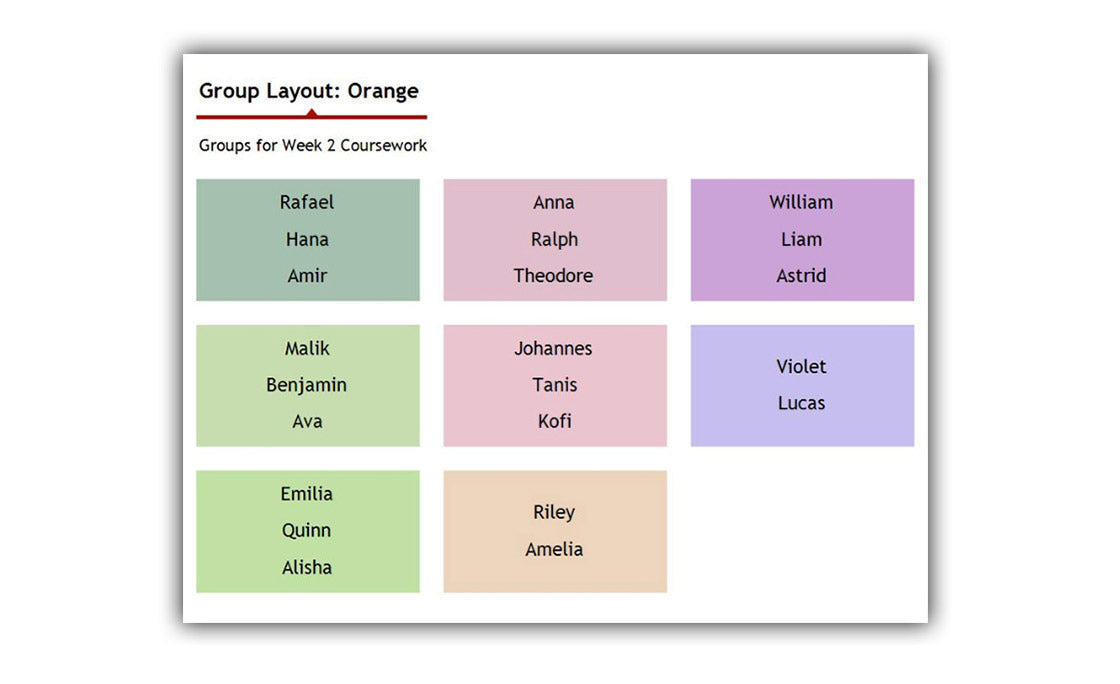To run a successful face-to-face training course, you will need to go through several training exercises. These exercises can be critical in making the training more effective.
Unfortunately, many trainers underestimate the power of training exercises and most of their focus is on the content of the course or knowledge transfer. Usually, this means that they are unprepared for training exercises or simply do not think about them at the right level.
There are 6 critical areas that you need to explore to make sure that your exercises are useful and enhance learning. Missing even one of these areas can significantly affect your performance in that specific part or even the rest of the training course. Hence, it pays to know these 6 areas by heart and always consider them for every single training exercise you run.
These 6 areas are as follows:
What Are You Trying to Achieve by Running This Exercise
Perhaps the most important question you need to ask yourself before running any exercise is to see what purpose it serves. Time is always of essence in any training course and you must be ruthless in filtering out activities and content that will not serve the main purpose of the exercise.
Consider the following:
- Is this exercise part of learning a particular skill without which delegates are unlikely to learn the skill?
- Is this exercise meant to increase recall rates and memory?
- You can use repetition techniques to increase recall rates.
- You can use exercises that have an element of shock and surprise so they become memorable.
- Is this exercise meant to energise and entertain at a crucial time during the course (such as when delegates are tired)?
- What kind of conclusion do you want delegates to make once they have gone through the training exercise? What will be covered in the debriefing session after the exercise?
- Is this exercise meant to indirectly raise awareness on a topic? If so, you need to be careful so delegates can reach their own conclusions.
How Much Time Do You Have to Run It
When it comes to running training exercises, timing is everything. There are several aspects of timing that you should get right:
You need to pick the right time for the training exercise:
Consider the following:
- Is the time spent to run this exercise worth the results obtained?
- Is this the ideal time to run this particular exercise?
- Are delegates fresh on the ideas discussed so they can easily go through this exercise?
- Are delegates tired? Do they have enough energy to go through this exercise? If delegates just went through a particularly demanding training exercise, be careful not to follow it with another one which might lead to non-participation.
You need to adjust the length of the training exercise:
Do you have enough time to run the exercise? Training activities can take a considerable amount of time. As a general rule, it is better not to run an exercise than to rush through one, skipping steps, or worse, skipping the follow-up discussions.
There are two possibilities:
-
You are late. If you are short of time, you may need to skip a part or adjust some parameters to make it shorter:
- For example you can increase the group sizes to reduce intra-group discussions later on.
- Rather than getting groups to go over three separate case studies in a given exercise, get them to go through two case studies.
- You are early. If you have plenty of time, you may need to elaborate on some parts more and can go through the exercise at a leisurely pace. You can also extend the discussions. However, be careful not to overdo this as it can become an overkill to cover one small topic for too long.
What Do Your Delegates Need
After knowing your objective and timing, the next most important consideration is to know what your delegates need. As the training course unfolds, you get to understand your delegates’ weaknesses and strengths. You might have originally planned to go through a specific exercise on, say, delegation skills. Suppose during the course you realise that most people are happy with their delegation skills and what they are really struggling with is handling interruptions. Carrying on with your original plan to cover delegation skills will be wasteful.
You need to react to your delegate’s needs by giving them what they want. In this case, you must have several optional training exercises that can be used based on the training requirements discovered during the course. This requires planning and foresight but will get easier with experience.
You will also need to consider how the exercise will affect the delegates or the training course. Consider the following:
- Do delegates need an exercise to energise them?
- Would delegates feel comfortable going through this exercise without feeling embarrassed? Does it involve answering awkward questions?
- Is the topic of the exercise potentially sensitive leading to heated discussions? Such discussions can polarise the group or distract them for the remainder of the training session.
- Would the training exercise raise issues that will potentially lead to getting side tracked?
What is the Most Ideal Group Combination
The way you divide your delegates into groups can have a significant effect on the outcome of an exercise. Some exercises are made to be run on an individual basis. However, for those that are interactive and group based you must consider the following:
- What is the ideal size of the group for this training exercise? Consider the difficulty level and timing.
- For the purpose of this exercise, is it better for delegates to have a common background or expertise level? Sometimes, you can pair knowledgeable delegates with those who are not as skilled or experienced in a particular group. Other times, it is more ideal to put delegates with advanced skills together and separate from groups of beginners.
- Has there been enough variety in group combinations to help all delegates work with each other? This helps to avoid making people feel like that they are “stuck” together, especially if they don’t get on well with each other. To solve this, change group combinations between running each exercise. However, you need to do this efficiently to minimise time loss. If you have a large group, use clock buddies.
What Resources Do You Need to Run the Training Exercise
You will need to be totally prepared to go through the exercise. Lack of preparation can be very distracting to delegates and will certainly affect their training. Consider the following:
- Do you have all your props, tools and equipment to run the exercise?
- Do you have enough copies of forms and handouts for all delegates? Make sure you prepare these before the course. Running out of the class to get some extra copies breaks the flow and doesn’t look professional.
What Sequence of Activities Do You Need to Go Through
From a delegate’s point of view, nothing is worse than been promised to go through a great exercise only to find out that the trainer doesn’t remember the steps well, makes mistakes, or is confused about how to proceed.
The only way to avoid this is by practicing. This is critical especially if the exercise is complex such as managing several groups in different rooms and different times.
You must think of running training exercises as an acting performance. Much like an actor you must rehearse the piece, know the sequence by heart and perfect the timing between the parts. You should anticipate how delegates will act their part and know how to respond accordingly. In fact, your performance is much similar to an improvisation act, where you need to come up with an act on the spot while still going through a pre-scripted sequence as the exercise unfolds.
Of course this kind of performance is not required for every kind of exercise. Some exercises do not require your involvement as much and so long as you know how to run them you will be fine. Some complex training exercises, especially those with different parts or roleplays sessions, are more involved and must be practiced before the course so you know what you are doing at each step.
Comments
By manish Punya @ Monday, January 13, 2014 1:19 AM
Very clear explanation of the critical areas to be considered before using an exercise for training. It will help trainers to take correct decisions.
Soft Skills Training Materials
Get downloadable training materials
Online Train the Trainer Course:
Core Skills
Learn How to Become the Best Trainer in Your Field
All Tags
Training Resources for You

Course Design Strategy
Available as paperback and ebook

Free Training Resources
Download a free comprehensive training package including training guidelines, soft skills training activities, assessment forms and useful training resources that you can use to enhance your courses.

Our Comprehensive Guide to Body Language

Train the Trainer Resources
Get Insights - Read Guides and Books - Attend Courses
Training Materials
Get downloadable training materials on: Management Training, Personal Development, Interpersonal Development, Human Resources, and Sales & Marketing














Leave a comment
All comments are moderated before being published.
This site is protected by hCaptcha and the hCaptcha Privacy Policy and Terms of Service apply.